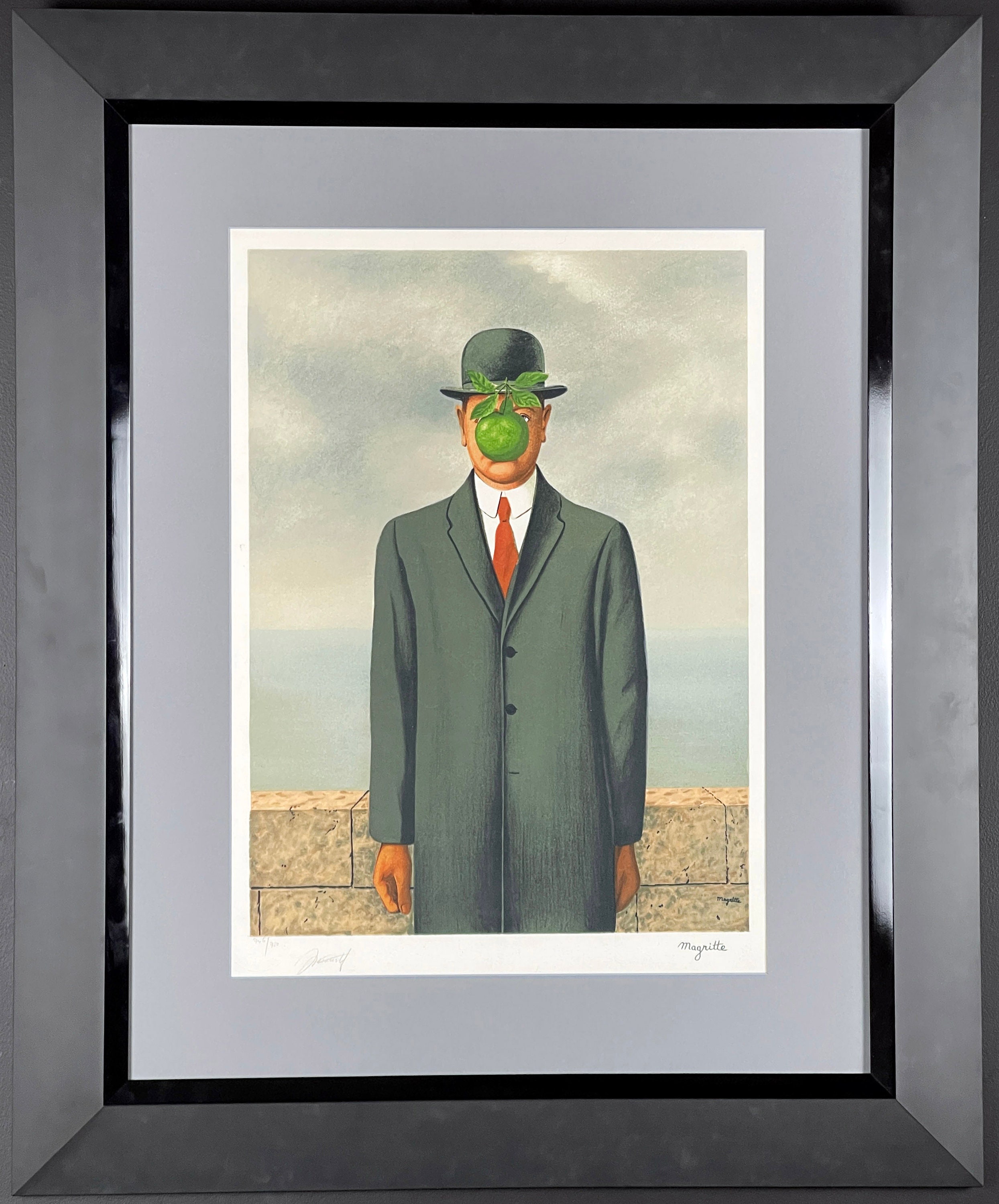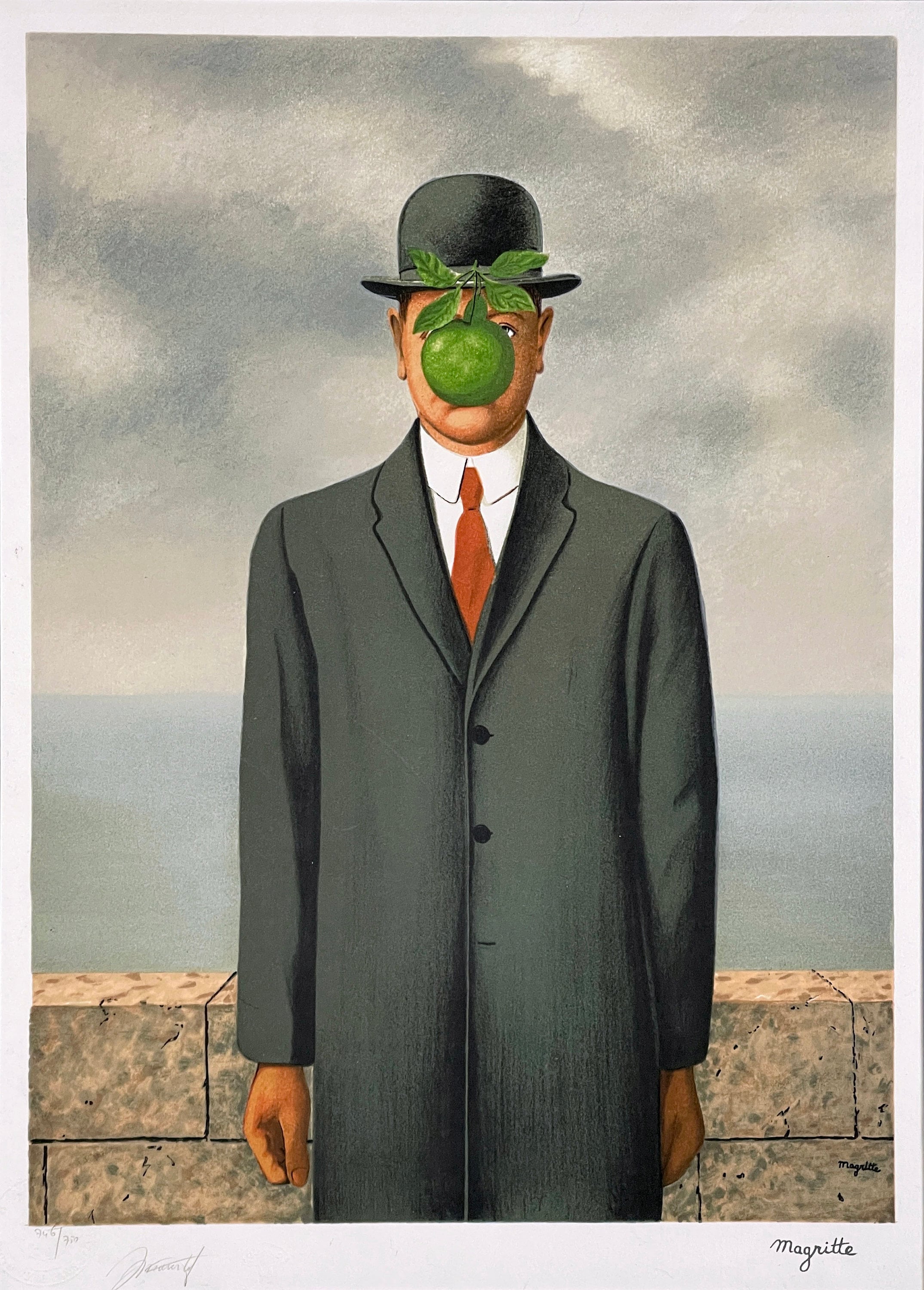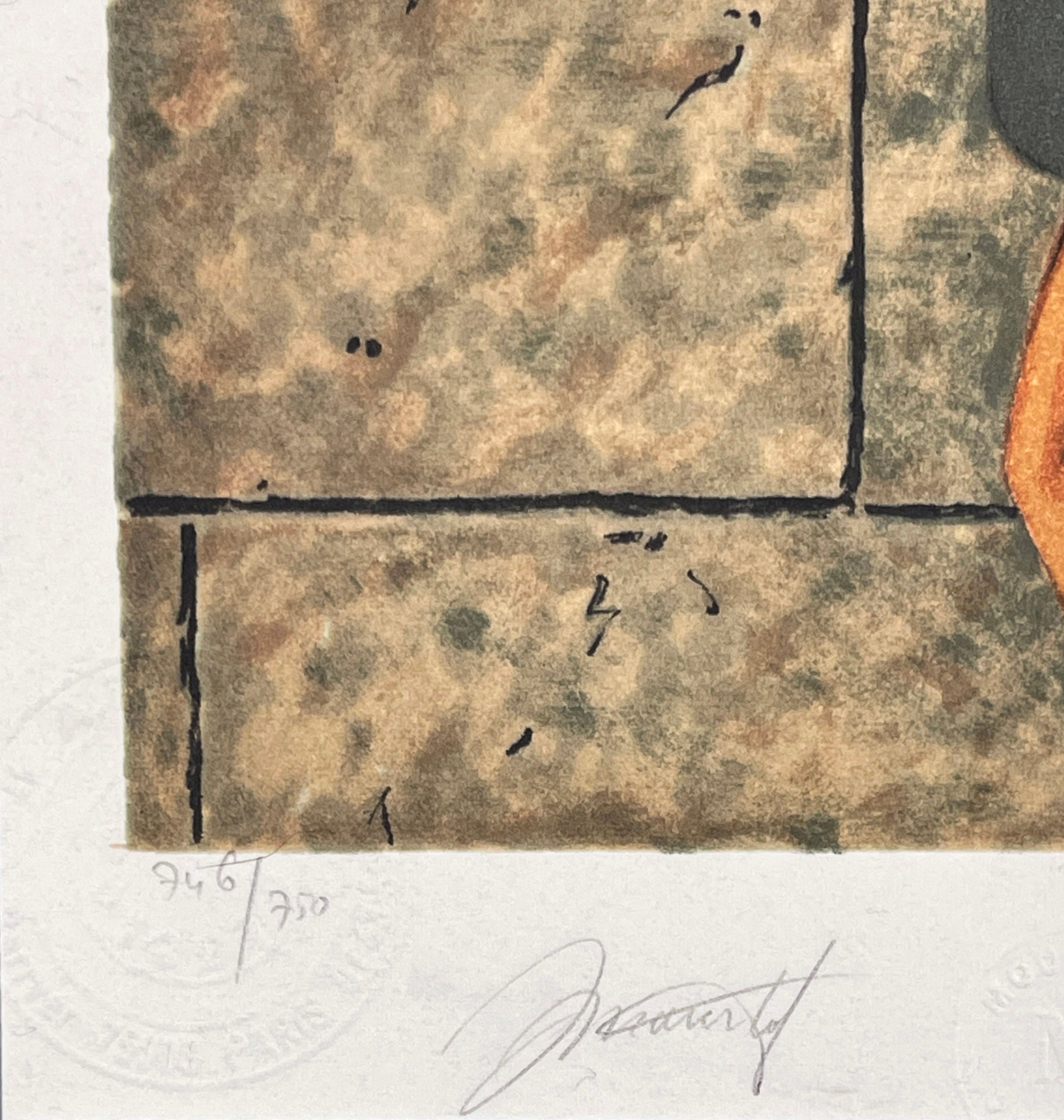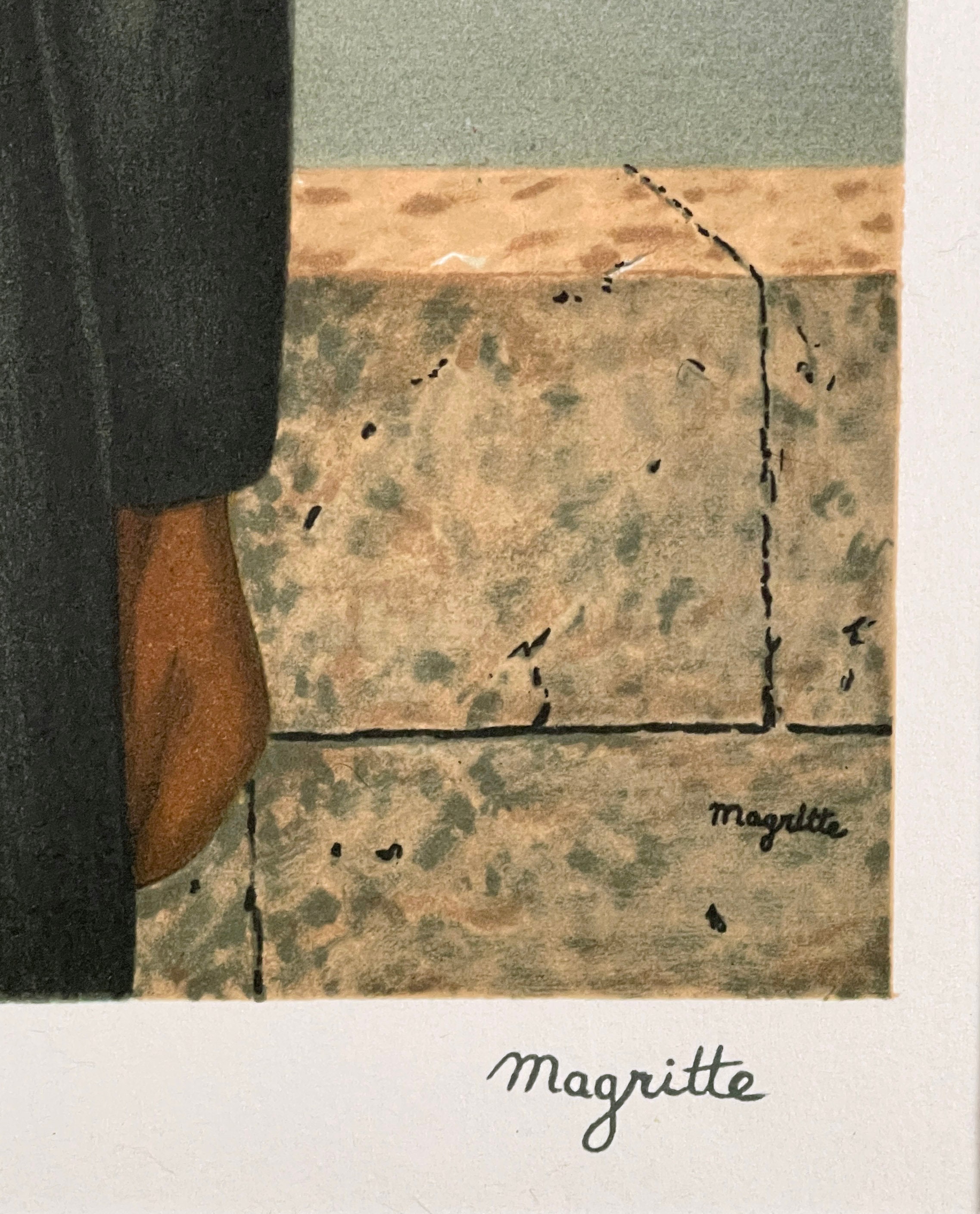RENE MAGRITTE "Le Fils De L'Homme (The Son of Man)" 1973 Lithograph, Framed COA
$5,900.00
RENE MAGRITTE
"Le Fils De L'Homme (The Son of Man)"
1973 Lithograph
Artist: Rene Magritte
Title: Le Fils De L'Homme (The Son of Man)
Medium: Lithograph on Velin paper from the original 1964 painting produced by Moulot by agreement with the Magritte Estate
Edition: 746/750
Signed: Hand signed and numbered in pencil by Mourlot lower left,
The print bears a facsimile signature of the artist Rene Magritte and embossed seals of the Magritte Estate - ADAGP Paris, and Mourlot.
Accompanied by a gallery certificate of authenticity
Condition: Excellent
New archival conservation framing
Framed size : 32 3/4" x 27"
Artwork: 21 3/4" x 15 3/8"
FRAMING ($1200 Value)
Newly Framed with:
- Contemporary wood moulding
- Crescent Rag mat
- TRU-VUE Optium MUSEUM Acrylic
TRU-VUE Optium MUSEUM Acrylic
Trusted by the world’s most renowned museums, this state-of-the-art glazing boasts a virtually invisible anti-reflective coating allowing viewers to see the finest details in crystal clear color neutrality, while its UV-filtering, abrasion resistant acrylic, and anti-static coating offer uncompromising protection and preservation.
FEATURES:
- Virtually eliminates reflections
- Blocks up to 99% of UV rays
- Optimal light transmission protects and brightens colors
- Anti-static protection that immediately dissipates static
- Durable hard coat protects against scratches
- Shatter resistance safeguards against injury and damage to artwork
- Cleans like glass – no special cleaners needed
- Proprietary coating is engineered for permanence
Rene Magritte
René Magritte was a Belgian surrealist artist best known for his witty and thought-provoking images and his use of simple graphics and everyday objects, giving new meanings to familiar things.
Rene Magritte was born on November 21, 1898 in the town of Lessines in southern Belgium, near Brussels. He was the oldest of three brothers. He began taking art lessons at the age of twelve. Between 1916 and 1921 he was enrolled at the Academie Royale des Beaux Arts in Brussels, but he attended classes only occasionally. He had some published drawings, some advertising posters, a stint as a designer at a wallpaper factory and another doing freelance publicity work for a fashion house. He had toyed with Dada, Futurism and Cubism; he had designed magazine covers and stage sets and written song lyrics.
When he was only fourteen, Magritte woke one night to find his mother missing. He and his brothers searched the neighborhood and found her, drowned in a river after a jump from a bridge. Her nightgown was folded back over her face by the current. Several of his paintings painted through his life used a nude woman with various references to this tragic loss.
In 1922 a young friend of Magritte's showed him in a magazine he brought back from Paris, a smudgy reproduction of a work by the prewar precursor of surrealism, Giorgio de Chirico. On seeing it, Magritte uncharacteristically burst into tears. Although it was a few years before Magritte abandoned his "modern" formula, he recognized the key to his own domain. In the years 1926 through 1930 he painted over two hundred and eighty pictures, some of them very large. Max Ernst was another influence.
Magritte and his wife, Georgette Berger, were married for over forty-five years and had no children. They lived in Brussels at the same address from 1930 to 1954; he used to take his little dog for a walk every day. The Magrittes lived for three years in a Paris suburb, and Rene was in daily contact with the surrealists. He painted regularly four mornings a week at home in his stuffy little apartment. He was a moon-faced little man, middle-aged, who puttered around Brussels, proving that he has all the technical facility of the best surrealists and none of their nightmare overtones.
By the time Magritte died in 1967 at the age of sixty-eight, his genius was acknowledged.




